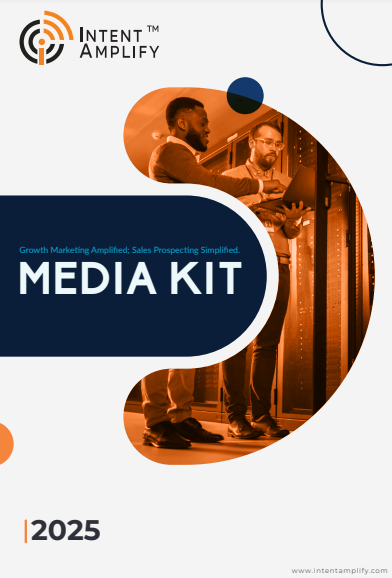
Prospect Research vs. Lead Research: Key Differences for B2B Teams in 2025
- Last updated on: July 7, 2025
Prospect and lead research are two separate but intertwined approaches in the B2B industry. Companies identify and reach prospective buyers.
Prospect research allows B2B companies to research companies based on company-level attributes, such as identifying ideal companies, understanding company goals, and identifying people within the company‘s decision-making process.
Lead research is focused on individual-level attributes as it seeks to find specific contact information for people, job titles, actions that indicate engagement, and signals that indicate intent to formulate tailored outreach.
Understanding the difference between prospect and lead research not only helps your team become more targeted but also more personalized, and as a result, more effective in producing ROI, whether you are scaling your ABM strategy or developing an even more effective outbound motion.
According to Forrester, in 2025, digital self-serve channels will handle more than half of major B2B purchases, placing a premium on precise targeting and personalization.
Understanding when to deploy account‑wide insights versus contact‑level details is important. It is the difference between a generic outreach that’s ignored and a tailored message that converts.
What is Prospect Research?
Prospect research is the methodical process of identifying high-potential accounts at the firm level and analyzing the data to put it into context. Prospect research goes beyond descriptive firmographics (i.e., industry, size, revenue) and includes:
Intent Indicators:
The behavioral indicators of solution–focused web activity (e.g., the download of content, specific search terms, time spent on solution-specific pages) would allow teams to forecast buyer requirements and target outreach where interest is maximized.
Technographics:
Analyzing the existing technology stack and IT infrastructure (i.e., what programs are installed and how they are being used) will reveal underlying pain points, providing recommendations for upgrades, integrations, and/or replacement opportunities.
Funding and Financial Intelligence:
Tracking recent venture capital investments, debt funding or mergers, and acquisitions activities will provide a limited look at companies with a budget available and in need; assisting in how you can position your solution as a timely investment opportunity.
Executive Changes:
Watching for new appointments to C–level positions, new board members, or leadership restructuring will give you an early indicator of a strategic shift, e.g., the launching of new technology initiatives or go–to–market realignment, allowing you to enable the engagement.
Why It Matters in 2025
According to Gartner, by 2025, 75% of B2B buyers will prefer not to have direct sales representative interaction for their self-serve buying experience, highlighting the imperative for granular digital engagement. In this situation, prospect research empowers organizations to:
Rank high-value accounts based on real-time intent signals and business triggers so that contact is aimed at companies demonstrating actual current interest and readiness.
Tailor value proposals to fit the respective account’s current initiatives. Infuse AI within customer service to enhance response times or accelerate migration to cloud‑native infrastructure for improved scalability.
Align sales and marketing on a shared account health and readiness framework with consistent criteria informing synchronized go‑to‑market action.
With such practices, B2B teams can connect with buyers where they want to be online with contextual and timely messages that engage and convert.
Tools & Techniques
- Intent Amplify collects and analyzes buyer signals from multiple channels to uncover early signals of buying intent.
- Crunchbase and PitchBook provide rich data on funding rounds for companies, mergers and acquisitions, and board memberships, allowing more strategic depth.
- 6sense and Bombora deliver intent-scoring models and digital footprints, allowing teams to see which accounts are actively exploring applicable solutions.
- ZoomInfo and Clearbit provide precise firmographic and technographic data, such that outreach is directed to organizations with the right industry profiles and technology stacks.
Through a multidimensional compilation of each account, prospect research enables revenue teams to target the ideal companies and address their most urgent issues directly.
What Is Lead Research?
Lead research is an emphasis at the individual level, developing full contact records and behavioral data to inform highly targeted solicitation. While prospect research identifies those accounts most likely to engage, lead research finds the exact decision-makers and what message they will respond to.
Its elements are:
- Contact enrichment:
Confirming and enriching individual data names, job functions, corporate email addresses, and professional social profiles, to make it accurate and complete.
- Behavioral tracking:
Recording digital traces, website visits, content downloads, and webinar participation to measure interest and intent in real time.
- Engagement history:
Aggregating previous interactions—email opens, call recaps, meeting results—to offer context for subsequent conversations.
- Social signals:
Tracking public approval and thought leadership activity—LinkedIn updates, Twitter mentions, conference talks—to find influence and topical relevance.
- Purchase intent indicators:
Identifying overt signals: downloading a vendor ratings guide, asking for pricing information, or signing up for a product demo indicates readiness to buy.
With these dimensions combined, lead research allows B2B teams to send the right message to the right individual at exactly the right time.
Why It Matters in 2025
Forrester Research highlights that generative AI and real‑time data are redefining how buyers discover and evaluate solutions in 2025.
Lead research enables:
- Prioritize high-conversion accounts by constantly tracking real-time intent indicators and key business triggers, such as spikes in content engagement, purchase intent topics, or newly announced initiatives. This real-time scoring allows outreach efforts to target companies showing immediate interest and preparedness to consider new solutions.
- Align your value proposition to existing organizational initiatives, framing messaging to address their immediate highest priorities (such as “Embed AI into customer service to shorten response times” or “Speed your transition to cloud‑native infrastructure for increased scalability”). By linking your solutions to their ongoing initiatives, you show relevance and strategic acumen.
- Align sales and marketing with a common definition of account health and readiness. Making use of explicit criteria, like intent scores, buying committee participation, and technology helps in planning and action. A common framework enables cross-functional teamwork, minimizes misalignment, and speeds decision cycles because it has all teams share the same language when assessing and developing target accounts.
Why Both Matter Together
The synergy between prospect research and lead research provides a single platform that propels best‑in‑class go‑to‑market performance. Organisations operating strong account‑based marketing (ABM) programs based on combined account and Through the alignment of company‑level indicators with person‑level engagement, teams can:
Prioritize and identify accounts by real‑time intent and business triggers (e.g., “Series B SaaS companies exhibiting AI buying intent”).
Enrich and segment contacts in those accounts, filtering for certain roles and actions (e.g., “VP of Customer Success who watched an AI webinar”).
Customize multi‑touch flows that allude to both account knowledge (“Your recent Series B funding indicates…”) and individual behavior (“I noticed you downloaded our AI maturity guide…”).
Measure and optimize by reviewing which pairs of account triggers and contact behavior produce the most conversions.
In one real-life example, a fintech provider combined intent signals with augmented contact data to achieve a 42% gain in qualified meetings and a 31% increase in pipeline velocity, accomplished solely by synchronizing their ABM platform with CRM workflows.
2025 Best Practices
Use AI for predictive intent and lead scoring
Install machine‑learning tools that predict account readiness and person engagement likelihood. According to kixie.com, ops companies see up to a 35% increase in accuracy with AI‑based analytics. Employ generative AI to create tailored email snippets that leverage account background and recent prospect behavior.
Find a balance between data hygiene and privacy regulation
Sustain enrichment rhythms that honor GDPR and CCPA standards. Mechanize data-cleanup processes to eliminate stale contacts and reduce bounce-backs so that campaigns target active, permissioned leads.
Coordinate cross-functional teams
Create a common glossary of account stages: “Alert,” “Engage,” and “Convert”, and utilize unified dashboards that show both account health scores and contact‑level activity. The typical B2B buying cycle has grown 22% longer over the last five years, so effortless sales‑marketing alignment becomes paramount.
Create vertical‑specific playbooks
Build templated steps and content packages specific to industry challenges (e.g., “Navigating Healthcare AI Regulations” or “Strengthening Manufacturing Supply Chains”). Refresh these playbooks every quarter to align with Forrester’s 2025 B2B forecast and Gartner’s AI expenditure benchmarks.
Measure ROI holistically
Track both account‑level metrics (deal size growth, sales cycle reduction) and gauge contact‑level measures (meeting rate, response rates). Use multi‑touch attribution models that give credit to prospect research triggers and lead research interactions for closed business, showing a complete picture of campaign performance.
By blending these practices, B2B teams will be able to transcend siloed data sets, producing customized, timely, and compliant contact, and accelerating pipeline and driving growth in 2025 and beyond.
Conclusion & Next Steps
Within the digital-first purchasing landscape of 2025, prospect research and lead research are supporting columns of a successful go-to-market plan. Prospect research shows where high-value opportunity resides, and lead research shows whom to talk to and how to connect. Together, they enable B2B teams to:
- Target with precision:
Prioritize accounts that have real purchase intent and organizational readiness.
- Personalize at scale:
Create outreach that aligns with both company goals and individual engagement indicators.
- Accelerate pipeline velocity:
Lead prospects through each phase with data‑informed, timely engagements.
Recommended Action Steps for B2B Marketers
Audit your technology stack
Alignment between account‑level intelligence tools and contact‑enrichment systems is very important.
Map your engagement workflows
Implement clean handoffs and common metrics across prospect research, marketing, and sales teams to break silos and maintain consistency.
Pilot an integrated strategy
Select a high-priority vertical, implement synchronized prospect and lead research, and track improvements in MQL-to-SQL conversion rates.
Integrating both viewpoints into your go-to-market processes, you will set your company up to succeed in the competition. It includes more strategic deals, builds more profound customer relationships, and drives sustainable growth in an increasingly competitive B2B environment.
FAQs
1. How do you align B2B marketing and sales with research insights?
Through a collaborative understanding of account health and contact readiness, organizations can develop harmonized workflows and messaging that enhance targeting and accelerate sales cycles.
2. What prospect and lead research success metrics should you measure?
Standard metrics are conversion rates (MQL to SQL), account engagement, lead quality scores, meeting rates, and pipeline velocity.
3. How does prospect research assist with account-based marketing (ABM)?
It highlights high-value accounts, reveals intent signals, and guides customized outreach programs based on company requirements and stages of buying.
4. What information is utilized in lead research?
Lead research incorporates enriched contact information, behavioral data (such as downloads or page visits), social signals, and purchase intent indicators.
5. What is the primary difference between prospect research and lead research?
Prospect research is concentrated on account-level information (companies), whereas lead research is concentrated on individual-level information (contacts and behavior).




